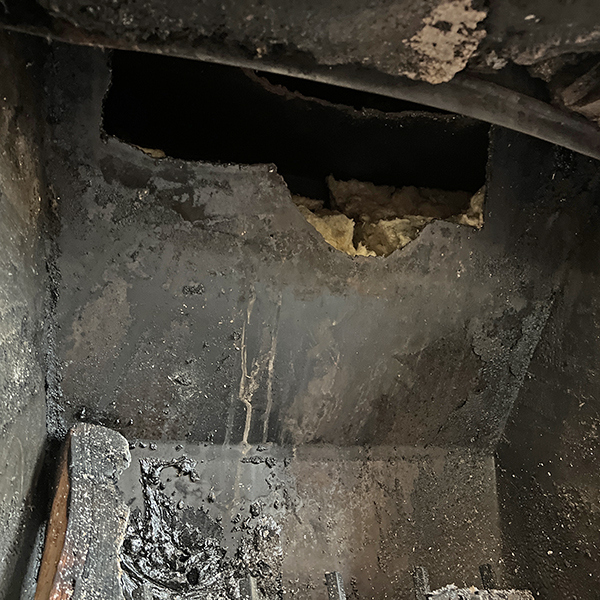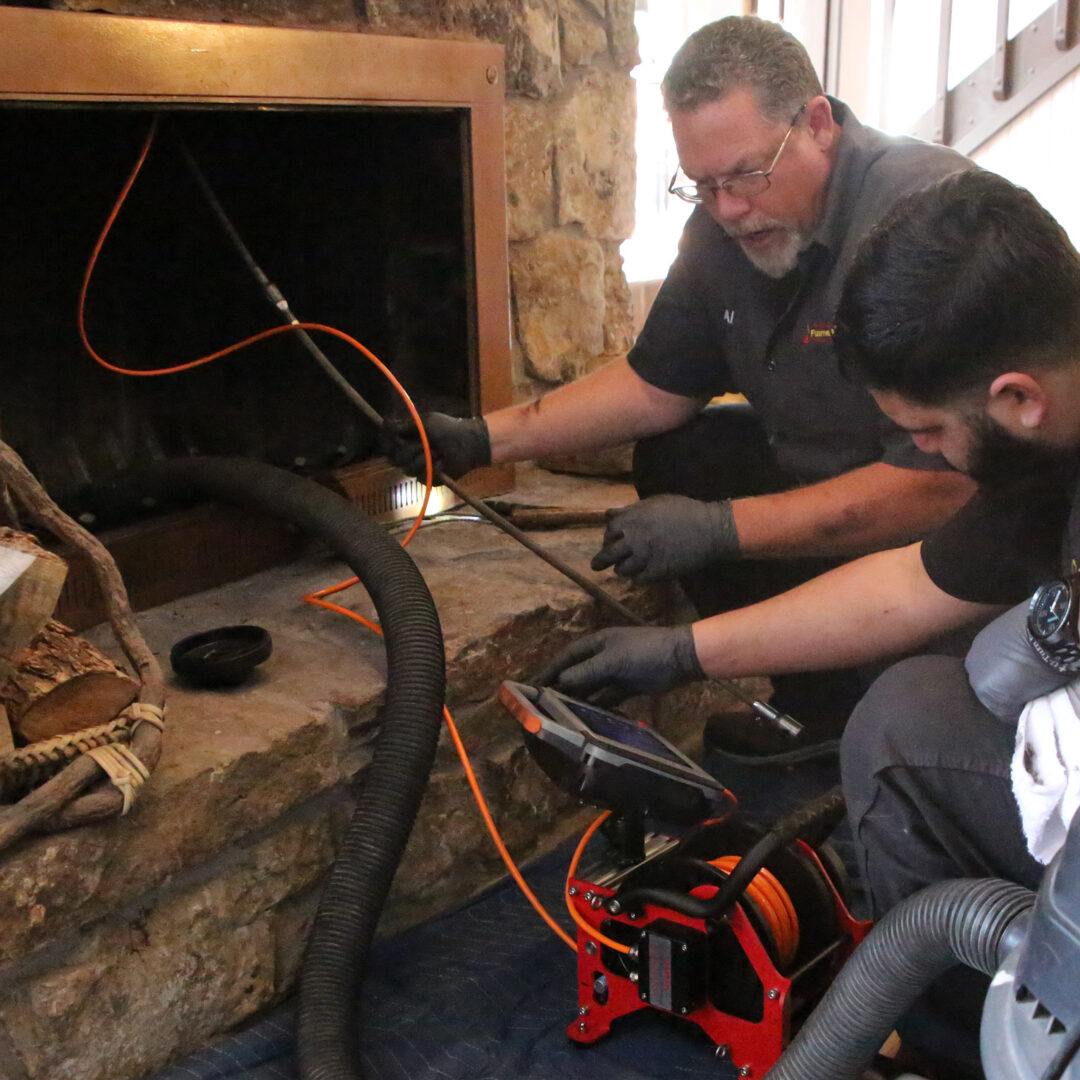Dangers of Creosote
Every time you burn logs in your fireplace, a hidden danger grows more imminent and threatens your family and your home. What is this jeopardous substance? It’s known as creosote, and you should know how it gathers in your chimney and the dangers of creosote. Let’s take a closer look.

What is Creosote?
Creosote is a dark, tar-like substance that forms due to incomplete combustion of wood and other organic materials. It consists of unburned hydrocarbons, smoke, vapors, gases, and other particles released during the burning process. Depending on the composition and burning conditions, Creosote can take on different forms, including sticky, tar-like, flaky, or shiny and hardened deposits.
How Creosote Accumulates in Your Chimney
As smoke rises up your chimney, it cools down, causing the creosote within the smoke to condense and stick to the chimney’s inner walls. Over time, additional layers of creosote build up, creating potential hazards. Factors such as the type of wood you burned, your burning practices, the chimney’s ventilation, and temperature can impact how fast creosote accrues.
Dangers of Creosote
- Chimney Fires: Creosote is very flammable. If the creosote buildup gets to a sufficient thickness and the temperature inside your chimney becomes hot enough, it can ignite and start a chimney fire. Chimney fires can be hazardous and lead to extensive structural damage or, worse, threaten your family’s safety.
- Less Ventilation: As creosote gathers, it can restrict the airflow within your chimney, inhibiting ventilation. The accumulation of creosote will interfere with the fireplace’s ability to draw in fresh air and expel combustion byproducts, increasing the risk of smoke and harmful gases will enter your home.
- Toxic Fumes: Creosote contains harmful chemicals, such as carbon monoxide, which can be released into your home if the chimney is obstructed or the accumulation becomes overheated. Breathing in these toxic fumes can pose severe health risks, including carbon monoxide poisoning.
Signs of a Creosote Buildup in Your Chimney
- Excessive smoke: If you notice excessive smoke or a strong, unpleasant odor while using your fireplace, it could indicate a creosote buildup. The presence of creosote restricts proper airflow, leading to increased smoke production and lingering odors.
- Thick, black residue: Inspect the interior walls of your chimney for any visible buildup of thick, black residue. Creosote deposits may appear sticky, tar-like, flaky, or hardened and can be seen on the chimney walls or the damper.
- Sooty chimney cap: A chimney cap covered in dark soot is a potential sign of creosote accumulation. The cap collects the byproducts of combustion, and if it becomes heavily coated, it suggests an excessive buildup within the chimney.
- Slow-burning or struggling fire: If your fire seems to struggle to burn or requires frequent adjustments, it could indicate a restricted airflow caused by creosote. The creosote buildup limits the oxygen supply to the fire, causing it to burn less efficiently.
- Discoloration or damage: Check for any signs of discoloration or damage on the walls surrounding your fireplace. Creosote buildup can lead to staining or even cause the surrounding materials to become charred or warped due to the intense heat generated during a chimney fire.
- Sparking or crackling sounds: Unusual sounds, such as popping, cracking, or hissing, coming from the chimney while the fire is burning could indicate the presence of excessive creosote. The burning of the creosote deposits causes these sounds and can be a sign of imminent danger.
Professional Chimney Sweeps to the Rescue
In order to ensure the safety of your home and loved ones, it is crucial to have your chimney inspected and cleaned regularly by a professional chimney sweep service. Here’s how they remove creosote effectively:
- Inspection: A chimney sweep begins by conducting a thorough inspection of your chimney, looking for any signs of creosote buildup, damage, or blockages. This assessment helps determine the extent of creosote removal required and identifies any additional maintenance needs.
- Removing Creosote From Your Chimney: By using specialized tools and techniques, the chimney sweep will remove the creosote from your chimney’s walls. The method used depends on the type and thickness of the creosote deposits. Techniques may include scrubbing with specialized brushes, power sweeping, chemical treatments, or a combination of all three.
- Cleaning Your Chimney’s Flue: After the creosote removal, the chimney sweep cleans the flue to eliminate any remaining debris or residue. This step ensures the chimney is clear and ready to facilitate proper ventilation during future fireplace use.
- Advice You Can Count On: Along with the cleaning and inspection processes, a reputable chimney sweep can provide guidance on proper burning practices, such as using well-seasoned wood, maintaining adequate airflow, and using appropriate fireplace accessories. They may also suggest installing a chimney cap or spark arrestor to prevent the entry of leaves, debris, and wildlife.

In Conclusion
The threat of creosote buildup in your chimney should not be taken lightly. Regular maintenance and professional chimney sweeping are essential to keep your fireplace safe and efficient. By understanding what creosote is, recognizing its dangers, and relying on experienced professionals for its removal, you can enjoy the warmth and glow of your fireplace without sacrificing the well-being of your home and loved ones.
FlameMaster is the Creosote Expert
If you are experiencing any signs of a creosote buildup in your chimney, contact us immediately. Call us at 719-661-3277 or complete our contact form.
We will send a team of our CSIA-certified chimney sweeps to inspect and clean your chimney and remove the threat of chimney fires caused by a creosote buildup. Don’t ignore creosote in your chimney; get in touch now.

